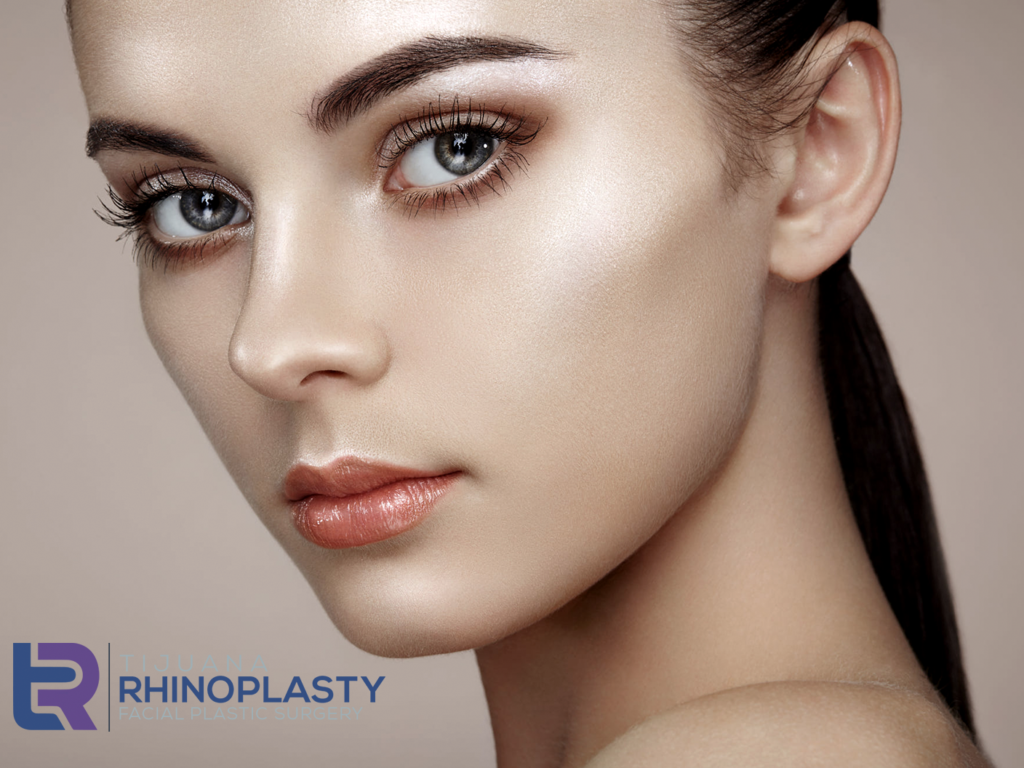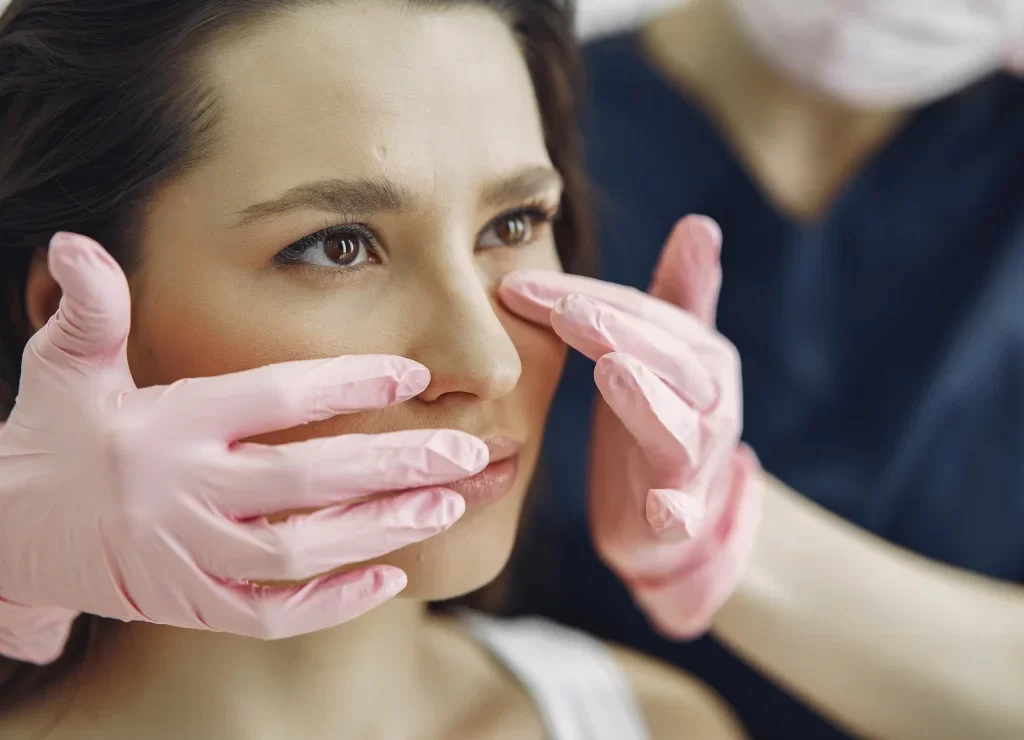After Rhinoplasty
Post-operative home care instructions for after rhinoplasty, or nose job surgery by Dr. Edgar Eduardo Santos from Tijuana Rhinoplasty. The following is a list of general instructions for your care following surgery. Please read them carefully several times as most of your questions should be answered here.
Instructions for your care will also be reviewed the morning after surgery. Carefully following these instructions should help you get the best results from your surgery.
What can I expect after rhinoplasty surgery?
There will be a mild to moderate amount of pain and discomfort associated with the surgery. This should be easily controlled with oral medications. Tylenol with codeine (or equivalent if allergy to codeine exists) is generally always sufficient for pain control. The discomfort and pain should begin to decrease within 72 hours after surgery.
Bruising and swelling are not unusual after the surgery. These symptoms often worsen on the second day following surgery and then steadily improve thereafter; this is normal. The amount of bruising that occurs varies significantly from one person to the next.
Most swelling occurs around the eyes, but some bruising may track down and discolor the cheek area. If only the septum and/or nasal tip are operated on, only slight, if any, bruising will normally be expected to occur.
Some bloody nasal discharge is to be expected after any nasal surgery. A small “mustache” type gauze dressing will be placed beneath your nose after your surgery. During the first 24-48 hours, this absorbent dressing often needs to be changed 10-20 times; this is to be expected.
Often at the completion of the surgery a light tape and plastic nasal dressing is placed on the outside of the nose, and plastic splints are placed on the inside of the nose. If only a septoplasty and/or nasal tip surgery have been performed, the external dressing may be omitted. Both the internal and external nasal dressings are removed in 5-7 days after surgery.
Frequent Symptoms
Nasal stuffiness is the most annoying problem that you will face after surgery. It is most distressful in the first week after surgery, and significantly improves once the internal nasal splints are removed. Any residual stuffiness can be expected to gradually improve over a period of several weeks thereafter.
Excess mucus is often present in the throat after surgery. It is due to the splints inside the nose stimulating the nose to temporarily produce more mucus than is normal. This will resolve once the splints are removed (5 to 7 days after surgery).
Numbness in the tip of the nose, upper front teeth or roof of the mouth following surgery is to be expected because nasal surgery typically causes a temporary disruption of some of the nerves in the area. Sensation will generally return slowly over a period of several weeks, and rarely, months.
Some temporary decrease or alteration in the sense of smell or taste is typical after surgery. This is, again, secondary to disruption of some nerves in the nose during surgery. These changes will begin to improve within the first 1 to 2 weeks after the procedure.
Important Facts
It is very important for you be aware of the fact that swelling from the surgery will temporarily make the nose appear broader and the tip more turned up and less refined than is desirable.
You will often notice that the swelling on the bridge of your nose will improve more quickly than the swelling on the tip of your nose. This should not be a cause for alarm.
All the swelling in your nose will greatly improve in the first few weeks after the surgery. Although much of the swelling will have resolved within a few months, your nose will continue to improve for up to one year after surgery.
Patients who have undergone only septal surgery do not normally have any significant swelling on the outside of the nose.
Utmost Importance
It is of utmost importance to tell Dr. Edgar Santos ahead of time if you have ever been on Accutane, received radiation therapy to the head or neck, taken steroids or immunosuppressive agents.
Immunosuppressed patients (HIV positive, chemotherapy, AIDS etc) and patients with certain autoimmune disorders may not be good candidates for this procedure as the risks of poor healing and infection leading to permanent scarring and poor aesthetic results may be much higher.
It is mandatory that you inform Dr. Edgar Santos if you have any of these conditions before surgery.
Care After Surgery
Make arrangements to have someone drive you to, and from, your surgery. Having someone stay with you on at least the first night after your surgery is highly recommended.
Be sure to fill your prescriptions before your surgery since it means one less thing for you to worry about afterwards.
You should squirt saline mist spray (e.g. salinex, ocean spray) and then place a small dab of either vaseline or antibiotic ointment (e.g. polytopic or bacitracin) inside your nose 4 to 6 times a day, beginning on the first day after surgery. This will minimize nasal crusting and make you feel more comfortable.
Both the saline spray and antibiotic ointment are available at drugstores without a prescription. A Q-tip moistened with hydrogen peroxide may be swabbed in the nose (be careful not to wet the outside of the nose) 2 to 3 times a day to also help reduce nasal crusting.
Arrive for your surgery in loose, comfortable clothing. Your top should button or zip rather than pull over your head.
Do not take any aspirin or any anti-inflammatory compounds for 2 weeks before and 2 weeks after your surgery unless you first discuss it with your surgeon.
If you are a smoker, you should not smoke for at least 2 weeks prior to surgery and 2 weeks after surgery. Smoking and chewing tobacco inhibit your circulation and can significantly compromise your surgical outcome.
To minimize swelling, you may use cool, clean compresses or ice wrapped in a dry cloth. Apply these gently to your closed eyes four to six times a day for the first twenty four hours after surgery.
Sleep with the head elevated for the first week after surgery.
You should not blow your nose for two weeks after surgery as it can disrupt proper healing and cause bleeding. If you have to sneeze, sneeze with your mouth wide open as this will minimize any disturbance within the nose.
For the first month after rhinoplasty, you should not rest your glasses on the bridge of your nose. Either wear contact lenses or suspend the glasses with the use of a small tape from your forehead (ask Dr. Santos to show you how to do this).
You should not do vigorous exercise and should avoid any significant physical exertion, lifting or straining for a minimum of 3 weeks after your surgery, as this activity could disrupt your wound healing and cause bleeding.
Recovery Timetable
Approximate recovery after rhinoplasty is as follows:
DAY 1 Return home. Use cool compresses for 24 hours. Some swelling and bruising, mild discomfort. Change mustache dressing as needed (often 10 to 20 times).
DAY 2-3 Maximum bruising and swelling.
DAYS 5-14 External stitches removed or dissolving. Internal and external nasal dressings removed by Dr. Ducic. Bruising going away.
WEEK 2-4 Much of swelling has begun to go away. Breathing better.
1 YEAR Enjoy your final result



